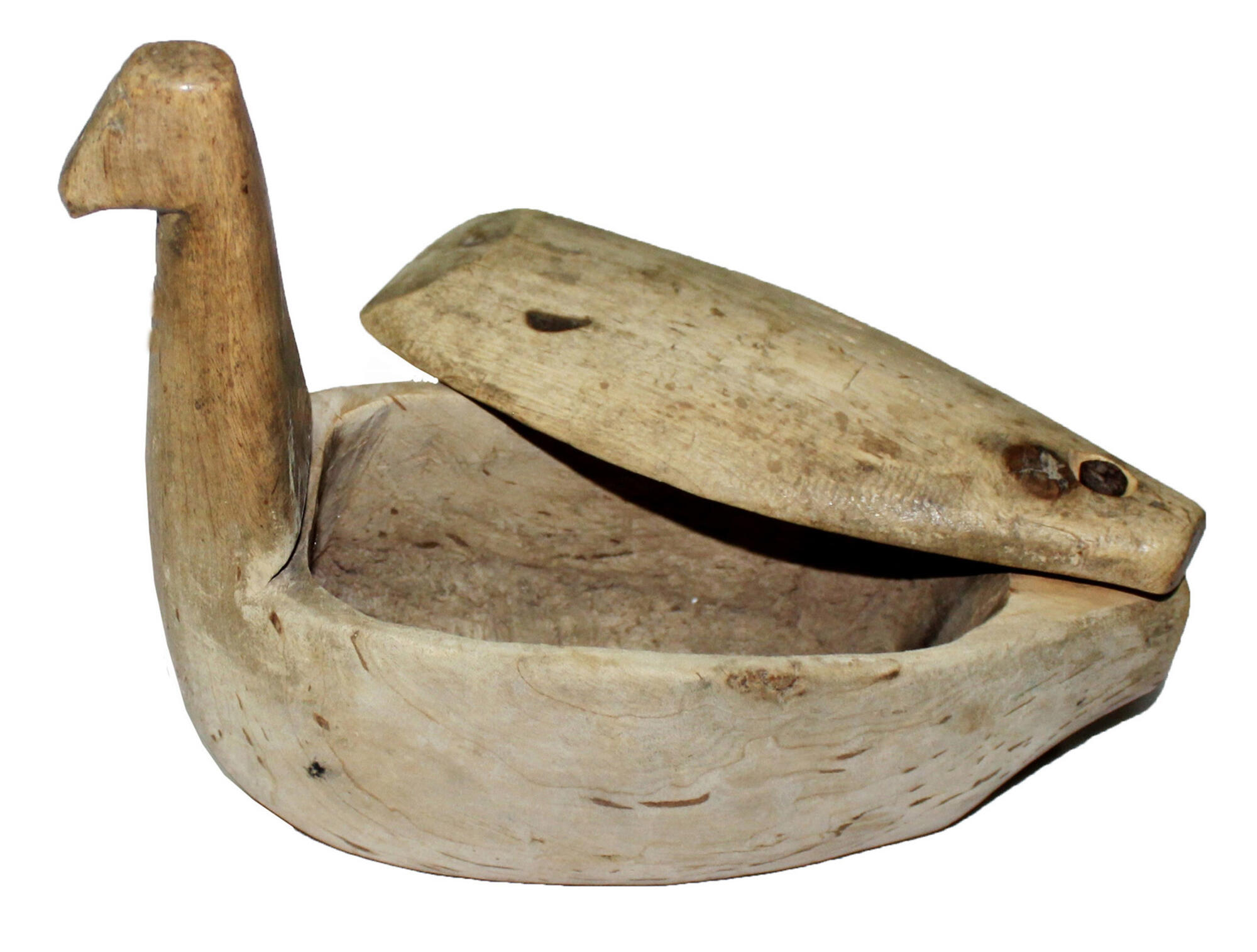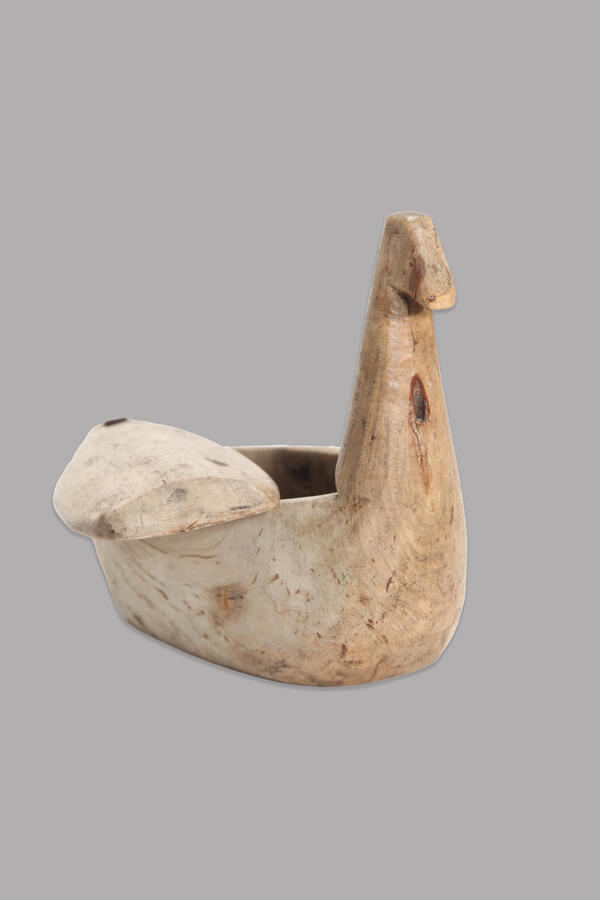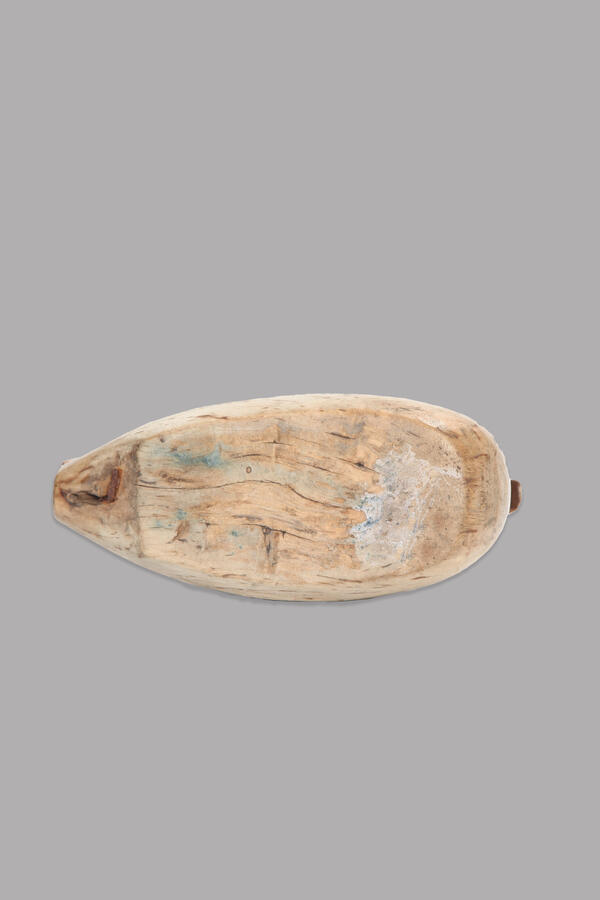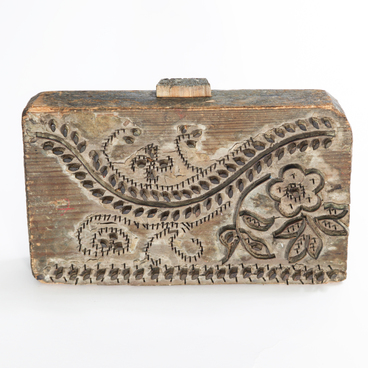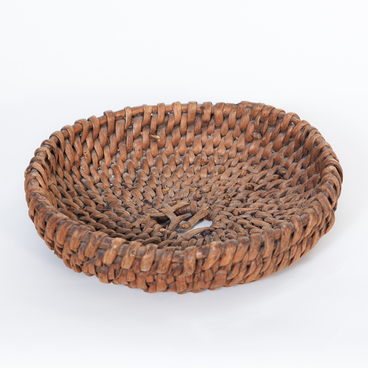The salt cellar in the form of a duck is carved from a single piece of wood. Duck-shaped salt cellars were usually made of wood, birch bark and burl, tree outgrowths. The movable lid is fixed to a small tail with a metal nail. The eyes are marked with crosses, the inside of the body is crudely hollowed out and the outside is sanded and polished. This salt cellar was found by staff members of the Komi-Permyak Local History Museum in the village of Sepol, Perm Region, in 1970.
The bird is one of the main motifs in the decorative and applied arts in the culture of the Perm peoples. The first images of birds in the Kama region appeared in the 3dcentury BC. The image of a bird-shaped idol with a human head and bird’s wings is associated with human ideas of the afterlife, the flight of the soul. The Duck was known as the foremother of mankind: according to the legend, she dove into the sea, picked up some earth from the seabed and brought it in her beak. It marked the beginning of a new world, and her two sons, hatched from her eggs, became the supreme gods — En and Omol — the embodiment of good and evil. Many omens in the Komi-Permyak culture are connected with ducks: for example, if a duck crossed the road, it was a warning of impending hardships. The image of the waterfowl was often found in ornaments, sculptures, drawings and bronze castings in the Perm animal style.
There are certain tunes associated with salt cellars and salt among the Komi-Permyaks. Salt is one of the most effective magical substances, which was widely used to protect oneself from evil forces and cure illnesses and bad spells. Particularly effective was a combination of bread and salt — “nyan-sov”. This very phrase was not only an invitation for a visit, but also a good wish for happiness, prosperous life, health and joy.
A duck salt cellar was given to a young bride on her wedding day. The gift was carved for her by her father, elder brother or maternal uncle. Leaving her home, the girl would take the salt-cellar with her as part of her clan, a symbol of its vitality and protection, The figure of a duck was the embodiment of paternal blessing and a symbol of family happiness in the future. The duck salt cellars were an obligatory attribute in the wedding rituals of the Finno-Ugric tribes.
The bird is one of the main motifs in the decorative and applied arts in the culture of the Perm peoples. The first images of birds in the Kama region appeared in the 3dcentury BC. The image of a bird-shaped idol with a human head and bird’s wings is associated with human ideas of the afterlife, the flight of the soul. The Duck was known as the foremother of mankind: according to the legend, she dove into the sea, picked up some earth from the seabed and brought it in her beak. It marked the beginning of a new world, and her two sons, hatched from her eggs, became the supreme gods — En and Omol — the embodiment of good and evil. Many omens in the Komi-Permyak culture are connected with ducks: for example, if a duck crossed the road, it was a warning of impending hardships. The image of the waterfowl was often found in ornaments, sculptures, drawings and bronze castings in the Perm animal style.
There are certain tunes associated with salt cellars and salt among the Komi-Permyaks. Salt is one of the most effective magical substances, which was widely used to protect oneself from evil forces and cure illnesses and bad spells. Particularly effective was a combination of bread and salt — “nyan-sov”. This very phrase was not only an invitation for a visit, but also a good wish for happiness, prosperous life, health and joy.
A duck salt cellar was given to a young bride on her wedding day. The gift was carved for her by her father, elder brother or maternal uncle. Leaving her home, the girl would take the salt-cellar with her as part of her clan, a symbol of its vitality and protection, The figure of a duck was the embodiment of paternal blessing and a symbol of family happiness in the future. The duck salt cellars were an obligatory attribute in the wedding rituals of the Finno-Ugric tribes.
